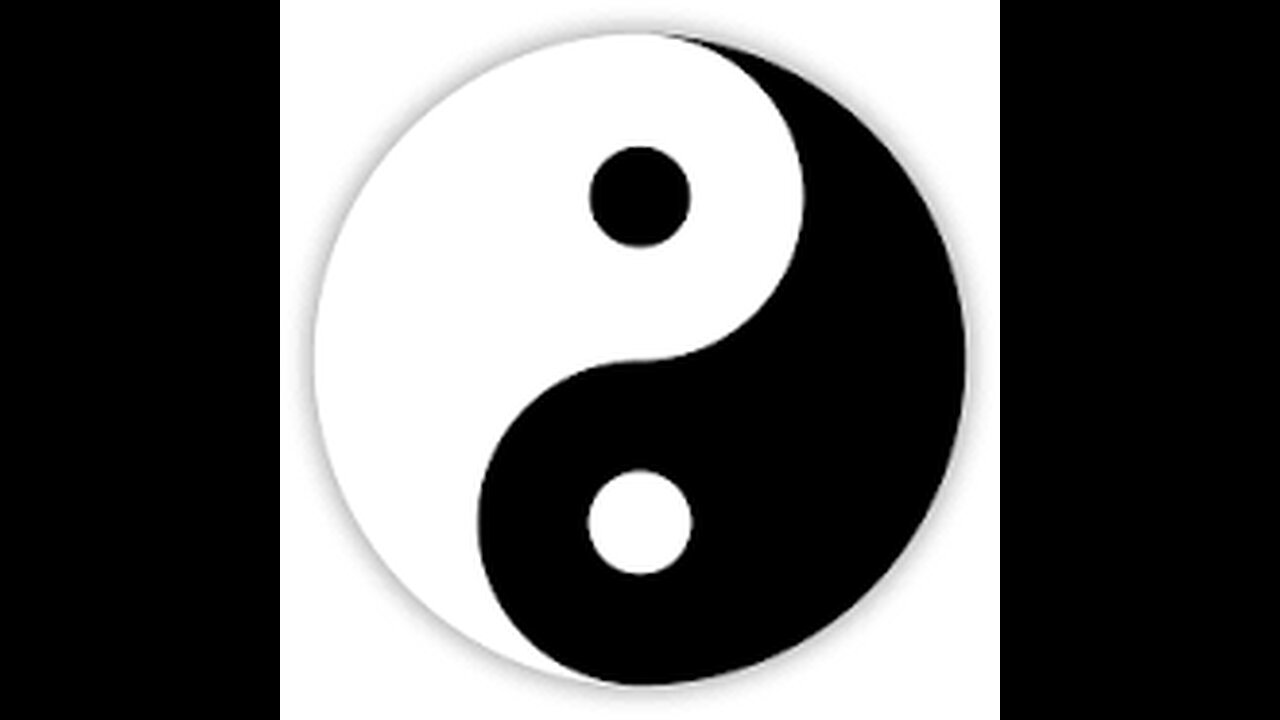Premium Only Content

The Theory of Yin-Yang - The Formation of the Theory of Yin and Yang
Yin-yang was originally included
in the category of being an ancient philosophy of China. Yin-yang in the simplicity refers to whether a place is exposed to sun or
shade. The place being exposed to the sun is
warm by nature, so it belongs to Yang. The place not having exposure to the sun
is cold in nature, so it belongs to Yin. Such as a mountain,
the southern side belongs to Yang while the northern side
of it belongs to Yin. Furthermore, through the process
of long-term observation, practice and investigation of these
original characteristics of Yin-yang, people have come to realize that Yin and
Yang exist in all things. Their interaction promotes the occurrence,
development, and transformation of all things. In consequence, Yin-yang is used
as a means of reasoning and analyzing all phenomena
in the physical world. The impact of the Yin-yang theory
in the science of Chinese medicine, has promoted the formation and
development of its own theoretical system. Yin-yang has become
an essential component and a foundation of Chinese medicine theory. The content of Yin-yang theory
can be described briefly by using the four aspects of opposition,
interdependence, relative waxing and waning,
and transformation. Opposition of yin-yang means that all the
things and phenomena in the physical world, contain two opposite aspects. Now try to match these phenomena
to the Yin Yang concepts: Yin-yang not only oppose,
but also contain each other. Neither of them can exist on
their own without the other. For instance, there can be no day
without night, and vice versa. There's no outside without there being the
presence of the inside, and vice versa. This relationship of co-existence
is known as interdependence. Chinese medicine regards functional
movement belongs to Yang and nourishing substance belongs to Yin. And that the one cannot
exist without the other. For instance, the beating action
of the heart belongs to Yang, while the heart organ,
per se, belongs to Yin. Both need to exist for maintaining life. The opposition and interdependence
of the Yin-yang are not stagnant. On the contrary,
they are in a dynamic state. The constant cyclical
change from day to night or the change in the seasons and
temperatures is an example of this. Transformation means Yin-yang
will transform into each other. Under certain conditions,
Yin can transform into Yang and Yang can transform into Yin. If using the terms waxing and
waning of Yin-yang, it is referring to the process
of quantitative change. The terms transformation between Yin-yang
is a process of qualitative change. Yin and Yang
are in a constant state of division. Yin-yang can be still divided
into another pair of Yin-yang. For instance, day is of a Yang nature and
night is of a Yin nature. By both day and
night can be divided even further. The period from dawn till noon is the Yang
aspect of the day, Yang part of the Yang. And the period from noon till dusk
is the Yin aspect of the day, Yin part of the Yang. The period from dusk till midnight
is the Yin aspect of the night, Yang part of the Yin. It should be pointed out that
the properties of the Yin or Yang and how they relate to things
is not absolute. It's relative.
-
 LIVE
LIVE
Right Side Broadcasting Network
9 days agoLIVE: President Donald J. Trump Keynotes TPUSA’s AmFest 2024 Conference - 12/22/24
12,942 watching -
 4:31
4:31
CoachTY
14 hours ago $8.95 earnedCOINBASE AND DESCI !!!!
38.6K8 -
 10:02
10:02
MichaelBisping
13 hours agoBISPING: "Was FURY ROBBED?!" | Oleksandr Usyk vs Tyson Fury 2 INSTANT REACTION
2.66K7 -
 8:08
8:08
Guns & Gadgets 2nd Amendment News
2 days ago16 States Join Forces To Sue Firearm Manufacturers Out of Business - 1st Target = GLOCK
55.9K56 -
 10:17
10:17
Dermatologist Dr. Dustin Portela
1 day ago $7.81 earnedOlay Cleansing Melts: Dermatologist's Honest Review
53.6K1 -
 1:02:20
1:02:20
Trumpet Daily
2 days ago $26.68 earnedObama’s Fake World Comes Crashing Down - Trumpet Daily | Dec. 20, 2024
35.1K34 -
 6:29
6:29
BIG NEM
22 hours agoCultivating God Mode: Ancient Taoist NoFap Practices
30.5K6 -
 30:53
30:53
Uncommon Sense In Current Times
1 day ago $7.99 earned"Pardon or Peril? How Biden’s Clemency Actions Could Backfire"
50.6K3 -
 40:01
40:01
CarlCrusher
20 hours agoSkinwalker Encounters in the Haunted Canyons of Magic Mesa - ep 4
47K2 -
 59:44
59:44
PMG
1 day ago $5.74 earned"BETRAYAL - Johnson's New Spending Bill EXPANDS COVID Plandemic Powers"
54.9K21